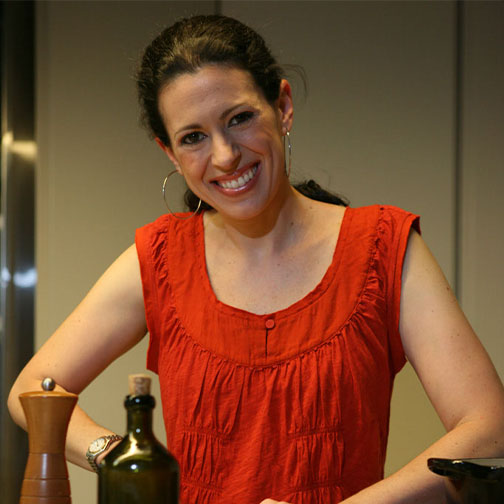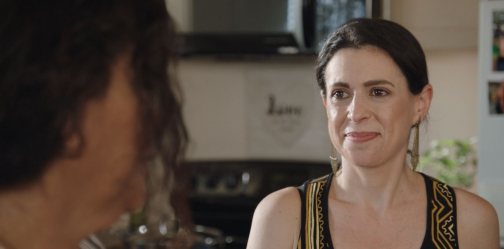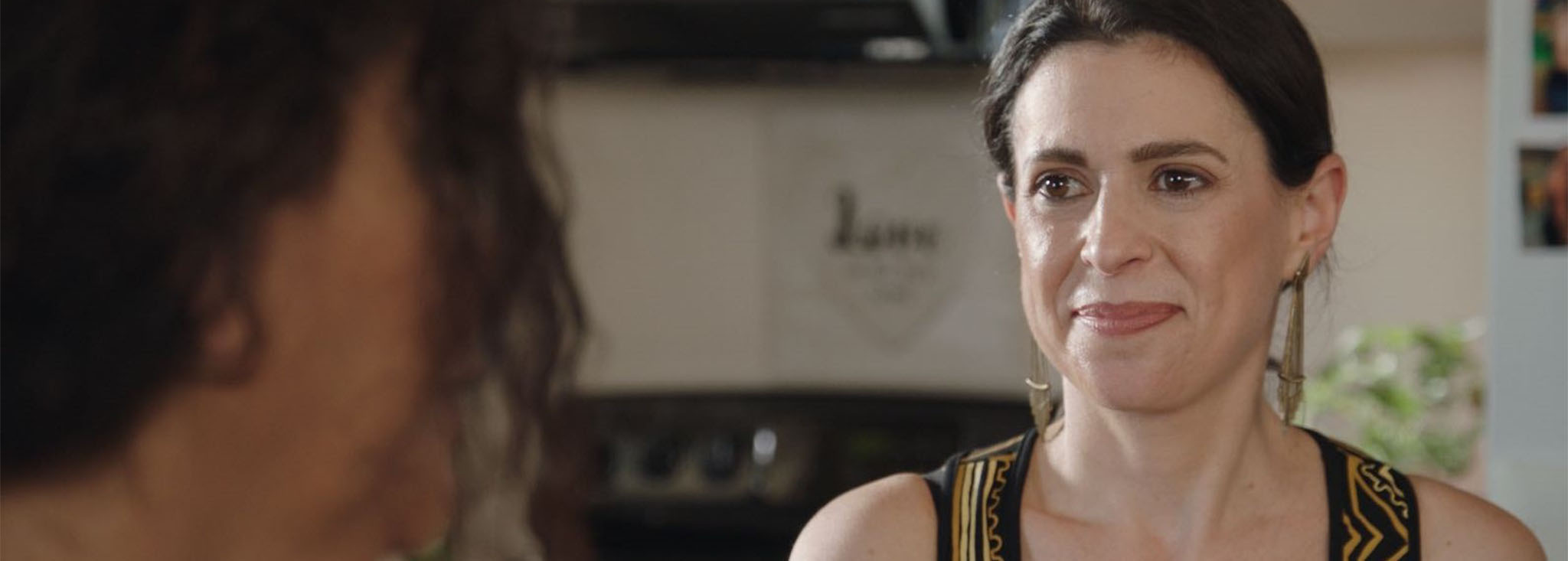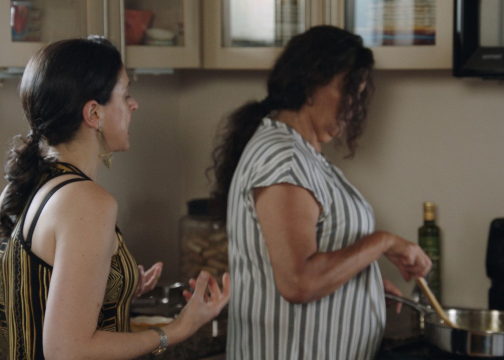Challenging Diabetes in the Kitchen with Chef Leticia Moreinos Schwartz
Leticia Moreinos Schwartz is a healthy cooking and lifestyle expert. Born and raised in Brazil, Leticia studied journalism at the International Culinary Center and has written two cookbooks: the award-winning The Brazilian Kitchen and My Rio de Janeiro: A Cookbook. Leticia is a spokesperson for America’s Diabetes Challenge, a program from Merck that urges people with type 2 diabetes to work with their doctors to set and reach their A1C goal, as well as learn the symptoms of hypoglycemia and how to reduce its risk. As part of her role, she’s featured in the program’s documentary, “A Touch of Sugar”, which aims to destigmatize type 2 diabetes. Leticia spoke with the Beyond Type 2 team about her role in the documentary, her passion for helping people with type 2 diabetes overcome the challenges to healthy cooking, and her own personal link to type 2 diabetes.
BT2: Hi Leticia, thanks for talking with us today. Can you start by giving us a little bit of background on yourself and your history with diabetes or working with people who have diabetes?
LMS: My grandfather passed away from complications of type 2 diabetes, and that’s how my whole connection to type 2 started. Many, many years ago, my grandmother struggled not only to take care of my grandfather but also to educate the rest of the family. When I look back now, I realize that she did certain things that were not necessarily so encouraging psychologically speaking. For example, she would isolate my grandfather, and she would tell him things like, “Okay, this is the food for the rest of the family… and this is the food for you since you have type 2 diabetes.” Back in the day, they didn’t have that much access to information, education, cooking classes, nutritional classes. I look back, and the alarming fact is that I see that there’s still a lot of people who are actually in the very same boat—even 20, 30 years later. I think that’s the whole purpose of my work with Merck and America’s Diabetes Challenge and why we put together this campaign and documentary.
 How did you first get involved with Merck and “A Touch of Sugar.” What specifically drew you to the project?
How did you first get involved with Merck and “A Touch of Sugar.” What specifically drew you to the project?
It was really through my connection with type 2 diabetes. I wrote two books about Brazilian cooking. Being a Brazilian immigrant and working as a chef, I started to do a lot of cooking segments. Then they reached out to me and I said I have a huge connection to type 2 diabetes because my grandfather and my whole family is affected by the disease. The opportunity to join forces was amazing because I really feel that it’s a mission of joy and love. I see how the challenges that my grandfather faced years ago are the same challenges that many Hispanic communities are still facing. And they are such simple things like eating healthy, exercising, working with your doctor to develop a plan that’s right for you, and just coping with the disease in general. And yeah, we know that these are very simple things, but not everybody has access to them.
I’m so excited about everything that our documentary is actually doing. I feel that it’s really changing lives and I’m honored and excited to be part of that.
In the documentary, you say that one of the worst things you can do is isolate a family member with type 2 diabetes. Can you talk a little bit about how food brings people together and the importance of food in culture?
I feel that to this day there are so many people who just refuse to step into the kitchen. This attitude is actually leading many people in a bad direction because cooking at home is one of the most important things that you can do for yourself and for your family. Cooking brings the family together, and home meals help you know and control exactly what you’re putting into your body.
And yet, the society tends to see it as if it’s better to say “oh, I’ll just do a take-out or I’ll call in some pizza.” And the results [of those decisions] are right in our face. Almost 12 percent of Hispanic adults in this country are already diagnosed with type 2 diabetes. And it’s expected that over their lifetimes, more than 50 percent of the Hispanic adults are expected to develop type 2 diabetes.
So it’s something we try to shed a light on with this movie. The many social factors and psychological aspects of the disease, even the stigma surrounding it and the language barriers involved. People that don’t speak native English, they can’t even talk with their doctors and have a fluent conversation. Sometimes they bring their children to be translators. There are so many communities that just don’t have access to cooking and nutrition classes. So there are a lot of factors that we’re trying to put together and try to make a change and make a better impact on society.
Let’s dive deeper into that psychological aspect. How do you help people with type 2 diabetes break through those barriers? What are some techniques that you use to get them to try to dedicate half an hour to cook a healthy meal?
What I try to do is show that cooking can be a fun activity that all the family can participate and do together, and it’s for the benefit of not only yourself but your family and the whole community. The most important thing is that healthy recipes come with the misconception that, “Oh, if it’s healthy, then it’s probably not so tasteful,” and that’s the opposite of my whole philosophy. Even now, I have a new cookbook that’s completely inspired by America’s Diabetes Challenge, and it’s called Latin Super Foods. It’s all about recipes that are great for the whole family to cook and eat together, and they’re healthy and absolutely delicious. You will be craving them again and again. I think this whole idea that healthy recipes are boring and tasteless is a thing of the past.
“A Touch of Sugar” discusses the importance of culture and diabetes care. How do you help people with type 2 diabetes and clients make the changes to their nutrition and diet habits without making them feel like they’re losing a part of their culture?
I feel that the cultural aspect is something that people are afraid to lose. When they receive a diagnosis of type 2 diabetes, it’s almost like, “Oh my God. I’m going to have to give up my tortillas, and I’m going to have to give up my beans.” I have an arsenal of classic Latin recipes, and that’s exactly what I try to do, is to show how you can still eat your Latin foods and recipes and ingredients without sacrificing flavor.
So, for example, let’s take a very classic Arroz con chorizo. There are ways to healthify that recipe. So instead of eating it with regular rice, let’s substitute for brown rice. Instead of using the regular chorizo sausage, which is delicious, but we can eat turkey sausage instead, and it will still be delicious. Instead of using store-bought stock or beef stock or chicken stock, let’s make chicken stock at home. There are so many ways that you can go around the kitchen and maneuver flavors and ingredients to make things taste absolutely delicious.
My role in the documentary was pretty much that. When I went to visit Susie Katona in California, she didn’t know a thing about cooking. My role is to show that you can make a change and you can create a better lifestyle for yourself that can help you get control of your type 2 diabetes.
In the documentary, Susie said she eats for comfort. Do you see that a lot among your patients? How do you get them to eat because they are hungry versus eating because of boredom or other emotional factors?
Yes, absolutely. I think that there are so many psychological and emotional aspects when you deal with type 2 diabetes. People eat for comfort just like Susie, or they feel a need to eat when they’re anxious or stressed. That’s why having a support system is so important to help you stay on track. If we can talk more openly and come together and realize that we can confront this problem together, it makes you feel a little bit better, and maybe you won’t need to rely on food as much to do that. Because after all, it’s hard to get better, but we can do it together. I really get a feeling that the movie is inspiring people to come together and make fundamental changes to the way that we support, treat and advocate for people living with this disease.
After working on the documentary, was there anything that you learned or maybe that surprised you about type 2 diabetes and healthy eating that you didn’t know before?
That’s an interesting question. I didn’t realize that working together had such a great impact. In my own family, growing up with my grandfather and my grandmother yelling at him, I just didn’t know that there’s actually a mental health part that comes with it as well. I feel that after watching the documentary, we have a lot more open space to talk about the mental aspect, especially for underserved communities. I think that people don’t talk about it openly, and I think people feel ashamed to talk about how they eat for comfort. I feel that I’ve learned that the psychological aspects are huge when dealing with type 2 diabetes.
Also, it’s so important to find a doctor that you have a good relationship with. That’s probably one of the points in the movie I felt very inspired because the movie shows a doctor who treats you as a human being, and not every doctor is willing to have a conversation with you about how your emotions can affect your eating habits.
For those with type 2 diabetes who want to start making changes to their diet today, what can they do? Where should they start?
There are many small steps that you can take and once you conquer one small step, then you work on the next one—brick by brick. It has to be that way because I think that people feel so overwhelmed. I encourage people to go once a week to your local farmer’s market, not just your supermarket, but your farmers’ market and talk to the people and taste the food. Take the kids or dog with you and buy the fresh produce at the farmers’ market. Another thing I hear a lot is “I don’t have time to exercise.” I try to encourage people to call a friend and go for a walk together, and you can chit-chat while walking.
There are other small things that make a difference—park your car a little bit farther and walk a little longer or don’t take the elevator and walk up the stairs instead. The little things in cooking matter, too. If you buy a roast chicken, for example, don’t throw the bones out. Put them in a pot and make homemade chicken stock. Just pour some cold water, boil for about 20-30 minutes, and you have a homemade chicken stock that you eat. Cooking doesn’t have to be hard. Put on some music and an apron to get into the zone. Start treating the kitchen as your health sanctuary, and look at the kitchen with different eyes.
 When you encounter people with type 2 diabetes who have trouble getting those fresh fruits and vegetables or going to a farmers’ market, what resources do you help provide them to get over those barriers?
When you encounter people with type 2 diabetes who have trouble getting those fresh fruits and vegetables or going to a farmers’ market, what resources do you help provide them to get over those barriers?
Yeah, that is probably one of the most important questions, and it’s probably the root of the issue, because today in this country, it’s almost cheaper to buy junk food than it is to buy healthy food. Fortunately, there are ways to overcome those barriers. You can create your own garden or shop at your local grocery store, where food may be less expensive. Food banks are also a good option.
Also, there’s a negative perception of frozen foods. I’m trying to erase that and say, “Wait a second. Frozen peas are absolutely delicious and super fresh.” I am in huge favor of freezing your own food such as doubling the recipe and freeze part of it. You’re going to come home at 7:30, you’re starving, and you don’t know what to do, then you remember you have something in the freezer.
What are some of your favorite recipes you cook at home for your family and how do you work in the sweet treats in a healthy way?
Sweet treats are always a challenge because I always want to get a tiny piece of chocolate. I’ve learned to love dark chocolate. I have so many recipes that are so amazing and share them on our website, America’sDiabetesChallenge.com. One is arugula, smoked salmon and mango salad. It’s so delicious because the contrast of the salty salmon and the buttery sweet taste of the mango is just yummy. I can’t get enough of that salad. I’m constantly creating new recipes. It’s such a passion of mine. I’m totally possessed by cooking.
To request a link to view the documentary, A Touch Of Sugar, please visit AmericasDiabetesChallenge.com and press “Click Here to View A Touch of Sugar” at the top of the page. On the website, you will also be able to find educational materials and type 2 diabetes management resources.






